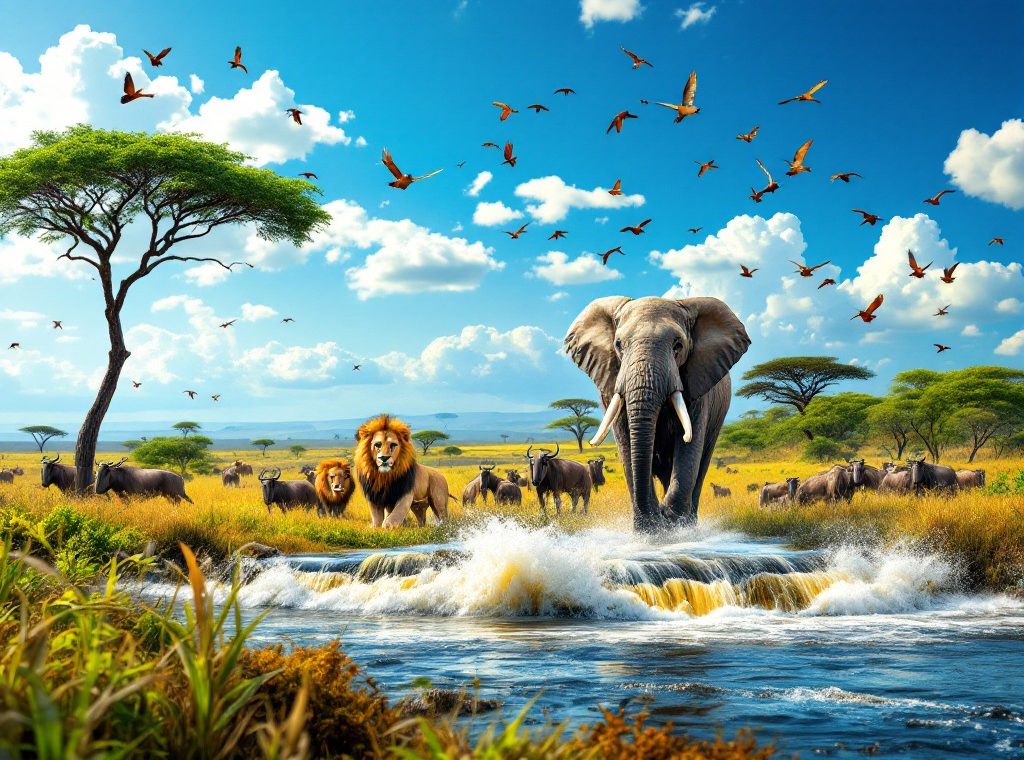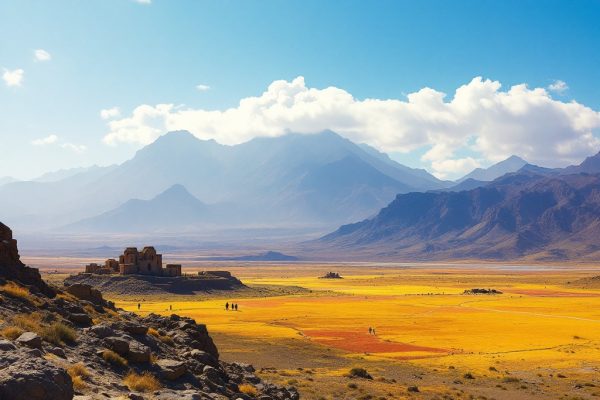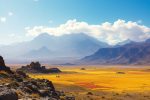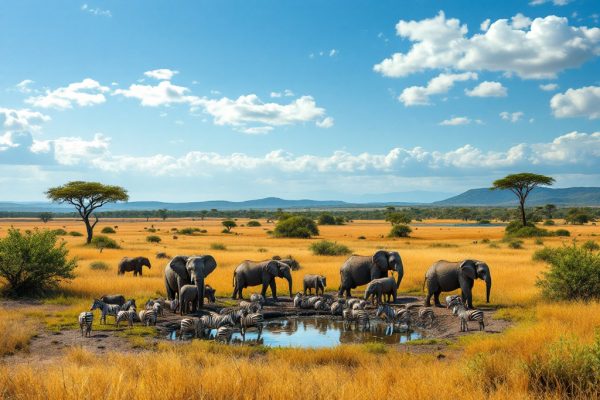When Is the Best Time to Travel to Africa
Dream of witnessing the Great Migration or exploring vibrant landscapes teeming with wildlife? Africa’s diverse climates offer incredible travel experiences year-round! Discover the best time to visit based on your interests, whether it’s spotting the “Big Five” during the dry season (May-October) or experiencing the magic of newborn animals in December. From the lush, bird-filled green season (November-April) to the thrilling river crossings of August, this guide unlocks the secrets to planning your unforgettable African adventure. Start exploring now!
Important information
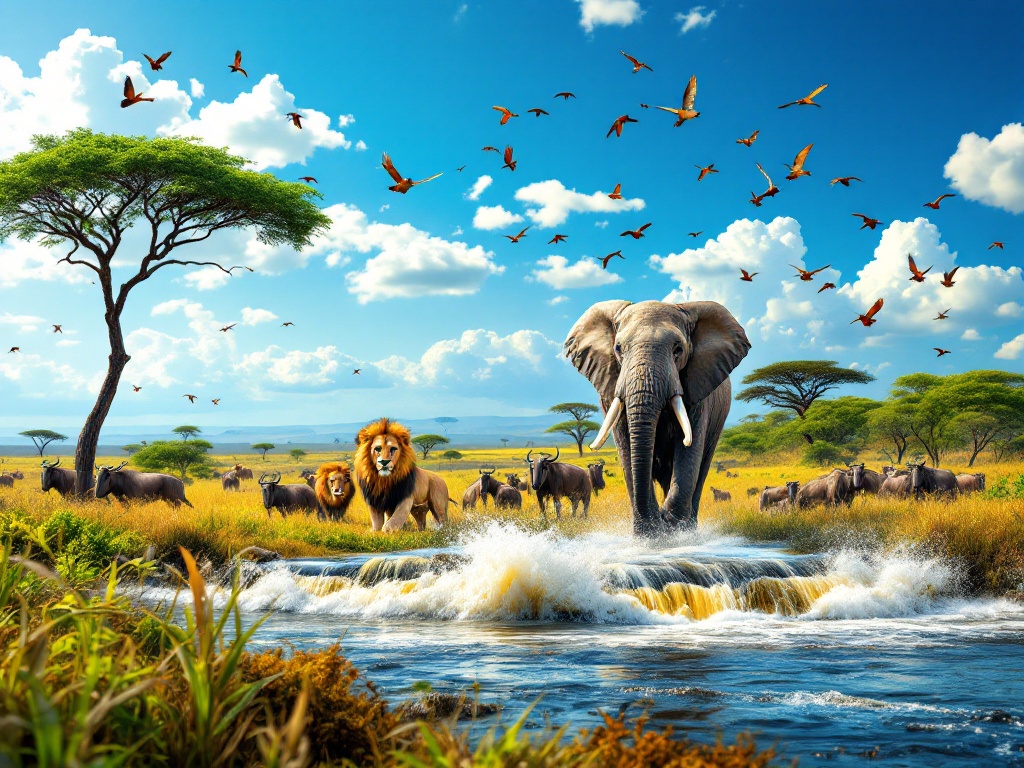
- Africa’s dry season (May-October) is generally best for wildlife viewing, with animals concentrated around water sources.
- The Great Migration in East Africa is a key attraction, peaking from June to early September.
- Birdwatching is optimal during the green season (November-April) due to migratory bird influx.
- Shoulder seasons (April-May & September-October) offer a good balance of decent weather and lower prices.
- Coastal regions offer moderate temperatures year-round.
Best Time to Travel to Africa
Africa’s diverse climates make it a fantastic travel destination year-round. The dry season (May-October) typically offers prime wildlife viewing opportunities, as animals congregate around limited water sources, resulting in breathtaking sightings. Coastal regions often boast pleasant weather throughout the year. Ultimately, the ideal time to visit depends on your chosen region and activities. For instance, birdwatching is best in certain areas during specific months. Careful planning will ensure a remarkable African adventure.
Understanding Africa’s Climate Variations
Africa’s diverse climate offers travel opportunities year-round. Southern Africa experiences dry winters from May to August, with cooler temperatures and minimal rainfall. East Africa has two distinct rainy periods: March to May and shorter bursts in November and December. Coastal regions generally enjoy moderate temperatures throughout the year. The dry season, spanning May to October, is perfect for safaris and optimal wildlife viewing. Each region provides unique, seasonal experiences.
Southern Africa
dry winters from May to August, cooler temperatures and minimal rainfall.
East Africa
two distinct rainy periods: March to May and shorter bursts in November and December.
Coastal regions
moderate temperatures throughout the year.
Dry season (May to October)
perfect for safaris and optimal wildlife viewing.
Factors Influencing the Best Travel Time
Planning an African safari? Choosing the right time is essential for an unforgettable experience. Consider these key factors:
Weather
Weather significantly impacts your safari experience. The dry season (May to October) offers easier wildlife viewing due to less vegetation and animals gathering around water sources.
The Great Migration
Witnessing this incredible spectacle requires precise timing. The herds move throughout the year, so research the best location and time for optimal viewing.
Birdwatching
Optimal birdwatching periods vary depending on the species you hope to see. Certain times of year, like the breeding season, offer exceptional opportunities.
Wildlife Viewing
Consider your must-see animals. Different species have varying activity patterns throughout the year. Research the best time to spot your favorites.
Budget
Safari prices fluctuate seasonally. Shoulder seasons (April-May and September-October) often provide a balance of good weather and lower prices.
By carefully weighing these factors, you can plan your dream African safari.
Month-by-Month Guide for Traveling in Africa
January: witness the miracle of wildebeest calves being born in the Serengeti, coupled with unparalleled birdwatching opportunities.
March: East Africa experiences heavy rainfall, requiring meticulous planning but rewarding travelers with lower prices and fewer crowds.
May: the dry season begins across many African regions, making it an ideal time to explore Southern Africa with its delightful weather and abundant wildlife.
June: winter arrives in Southern Africa, characterized by clear skies and pleasant temperatures. The Great Migration commences in East Africa.
July: spectacular whale watching is available along Africa’s southern coast. East Africa offers prime game viewing as the Great Migration continues.
August: the Great Migration in East Africa reaches its peak, with dramatic river crossings and thrilling predator-prey interactions.
October: prime wildlife viewing conditions prevail across much of Africa as dry conditions concentrate animals near water sources.
December: a fresh wave of newborn animals arrives in Southern Africa, along with migratory birds. East Africa experiences the onset of the short rains.
Visiting Africa in January: Witnessing the Birth of Migration Herds
Witness the thrilling calving season in the Serengeti this January. The southeastern region sees the birth of migrating herds, attracting predators and creating a remarkable wildlife viewing experience. This makes January a peak tourism season, drawing crowds to this natural spectacle.
Visiting Africa in March: Navigating the Rainy Season
Across much of Africa, March marks the arrival of the rainy season. While the increased rainfall can disperse wildlife, making sightings a bit more challenging, it also revitalizes the landscape into a lush, vibrant green. This period also offers a more intimate safari experience due to fewer tourists.
Visiting Africa in May: Start of the Dry Season
Southern Africa’s dry season begins in May, making it an ideal time for wildlife viewing. The following months offer excellent opportunities, so plan your trip accordingly.
Visiting Africa in June: Mid-Winter in Southern Africa
Southern Africa enjoys warm days and cool nights in June, the heart of its winter, making it an ideal time to travel.
Visiting Africa in July: Whale Watching and Game Viewing
Experience South Africa’s wildlife wonders in July. Along the coast, witness the majestic whale migration during prime whale watching season. Inland, the dry season transforms national parks and reserves into wildlife havens. Animals gather around limited water sources, offering unparalleled viewing opportunities. Thinner vegetation enhances visibility, creating a truly remarkable wildlife experience.
Visiting Africa in August: Experiencing the Height of the Great Migration
Experience the Great Migration in Kenya’s Masai Mara this August. Witness an unparalleled wildlife spectacle and encounter diverse animal populations.
Visiting Africa in October: Peak Wildlife Viewing
Visiting Mozambique in October, at the end of the dry season, offers excellent wildlife viewing opportunities. Animals gather around limited water sources, making them easier to spot.
Visiting Africa in December: Newborn Animals and Migratory Birds
Kenya’s short rainy season begins in December, making it a prime time to witness newborn animals and abundant migratory birds. This is an ideal month for wildlife viewing.
Best Time for an African Safari
Experience East Africa’s breathtaking Great Migration from June through early September.
For prime game viewing in Southern reserves like Kruger National Park, May through October offers ideal conditions for spotting incredible wildlife.
East Africa’s Great Migration: June to Early September
Witness the Great Migration in East Africa from June to early September. Millions of wildebeest, zebras, and other ungulates traverse the Serengeti and Maasai Mara ecosystems. This spectacle offers unparalleled wildlife viewing, including dramatic river crossings. The migration’s timing varies slightly each year, but the continuous cycle ensures constant animal movement.
Southern Game Reserves: May to September
Southern Africa’s dry season, from May to September, offers prime wildlife viewing opportunities. Animals congregate at watering holes, easily spotted against the thinning vegetation. While days are pleasant, expect cooler nights, so pack accordingly for a comfortable safari.
Wildlife and Game Viewing: May to October in Kruger National Park
Kruger National Park’s dry winter season, spanning May to October, is the best time to visit the park. Animals gather at waterholes, creating a prime opportunity for exceptional wildlife viewing.
Birdwatching Opportunities in Africa
Experience Africa’s vibrant green season, a birdwatcher’s paradise from November to April. Migratory birds arrive in abundance, creating spectacular viewing opportunities against lush landscapes. Encounter a remarkable diversity of species. While occasional rain may limit access to some areas and dense foliage can obscure viewing, the sheer number of birds makes it a rewarding experience for enthusiasts.
Green Season Birdwatching: November to April
Experience Africa’s vibrant green season, from November to April, a true birdwatcher’s paradise. Witness the arrival of flocks of migratory birds, adding to the continent’s rich avian diversity. The landscapes flourish with renewed life, creating lush habitats that enhance birdwatching opportunities. Enjoy easier spotting of a wider array of species against breathtaking scenery.
Planning Your Travel Itinerary
Planning an African safari? Consider traveling during the shoulder seasons. These periods offer a balance of pleasant weather and lower costs compared to the peak season, which has premium prices and limited availability.
Seasonal Pricing and Accommodation
Plan your African trip in advance and book early to secure the best values, as travel costs fluctuate seasonally and peak with higher prices.

